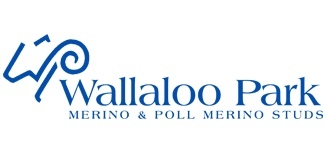Ag Tech Sunday - This is why 570 million farmers are not yet using agricultural apps
- By: "Farm Tender" News
- Ag Company News
- Nov 24, 2019
- 909 views
- Share

This article is bought to you by Wallaloo Park.
Until recently, using agricultural apps and software was a rare practice among growers.
This is now changing. The mass adoption of smart devices in the recent few years brought a huge change in the way growers all around the world practice agriculture. Agricultural apps, as well as agricultural software and digital agriculture solutions, are becoming more and more common and adoption rates are continuously increasing.
But is it going to continue this way?
Adoption of software platforms and apps by farmers
This trend results in an abundance of startup companies that develop new tools for growers, from farm management software, to apps that use sophisticated models and data analytics.
Not only startup companies are in the race, but also big companies, who identified the trend and the growing need, and are trying to develop their own apps and software platforms.
Such solutions include, for example, apps for identifying pests and diseases, farm management software, decision-support platforms, apps that present data received from sensors in the field etc.
Despite the increasing adoption rate of agricultural apps by growers, no single application was widely adopted, and the market is in its infancy.
Some obstacles are holding the market back…
Ad - Wallaloo Park now has flock Rams for sale - Ad
Obstacles for massive adoption of agricultural apps
One of the major challenges software companies are facing is that, while most startups focus on solving one aspect of the supply chain, growers need app and software solutions for the entire production process.
It is unlikely for growers to adopt multiple apps or software that each of them provides just a narrow aspect of the multifaceted growing needs. Moreover, while each solution individually claims to save time for the grower, working on multiple apps consumes even more time, which the grower doesn't have.
Furthermore, most apps and software platforms ask for similar information. For example, having to draw farm fields on the map, which crops are to be planted, pesticide and fertilizer stock etc. The grower, on his end, finds himself overwhelmed with the many solutions offered and from the need to log in to separate platforms.
In addition, the business models and pricing models of the many startup companies are different from one another. This results in further confusion among growers and sometimes even causes them to be reluctant to adopt a new software.
When growers were asked what their main expectation from an agricultural software or app was, most say that it must be simple and easy to use and that it must provide a solution for "all", i.e. for at least the three main practices – irrigation, crop protection and fertilization.
How can we overcome the barriers?
Therefore, I believe the agricultural software and apps market heads toward consolidation, merging of technologies and creation of platforms that encompass the entire production process.
One might say that this is in the in the giant companies' hands and that they will be the ones that will either develop a comprehensive software solution or acquire some smaller startup companies and put them on one platform. However, I think that because big companies have a complex structure and because their DNA is of an input or equipment manufacturing (irrigation equipment, fertilizers, pesticides, seeds etc.), they lack the enthusiasm and wider scope required to develop new technologies, which are not in their direct focus. Therefore, startup companies will continue to lead the research and development of apps and software. As it seems, startup software companies will eventually have to join forces, or merge, in order to provide that 'one' solution.
Ad - Wallaloo Park now has flock Rams for sale - Ad 











Share Ag News Via